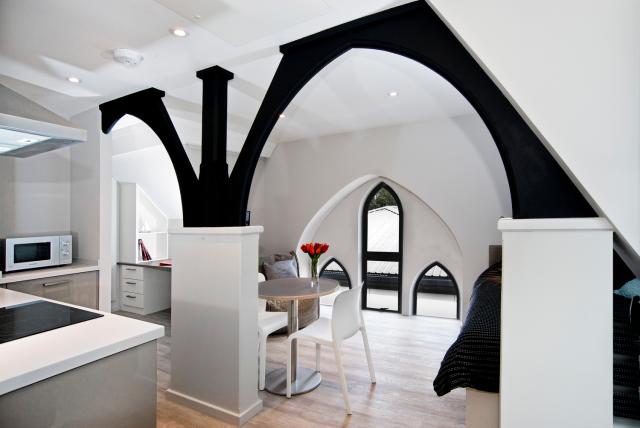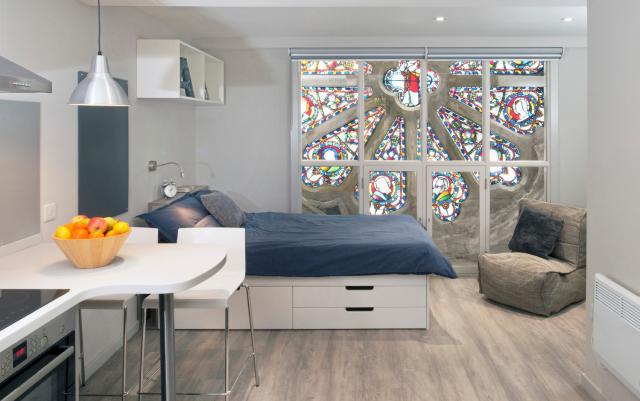
Residential
Fire Damage
Built in 1830s and designed by famed architectural duo, AWN Pugin and Charles Barry, who later collaborated on the Palace of Westminster, the former Unitarian Chapel on Upper Brook Street represents one of Manchester’s most important historic sites.
It is believed to be the first known example of a Gothic nonconformist chapel, and its adjoining Sunday School, built in the latter half of the 19th century by Manchester architect, James William Beaumont, is one of the country’s few surviving purpose-built Sunday Schools. The richness and complexity of the site is reflected in the Chapel’s and the Sunday School’s Grade II* listing.

The chapel fell into serious disrepair in the 1970s, and in 2007 its roof was removed on safety grounds, resulting in the rapid deterioration of the building’s internal fabric. In 2010 it was listed as one of the ten most threatened building in England and Wales by the Victorian Society, and has also been listed on Historic England’s At-Risk Register.
When developer, CZero, took on the building in 2010, pigeon faeces reached a foot deep in some areas, and the interior of the building was so overgrown with vegetation that it took three months to find ground level. The majority of the roof structure, timber, slates and the stone and bricks from the top sections of the wall, had been pushed into the middle of the chapel. The only original feature that remained was the balcony, although it was only partially intact and in an unsafe condition.


The overarching conservation principle has been to reinstate the original form of the chapel and at every opportunity, protect and incorporate surviving features into the new design.
The chapel’s roof has been rebuilt to the original profile, including stone parapets, pinnacles and north-east stone gable. Small surviving sections of the original roof structure have carefully been dismantled and incorporated within the reconstruction. The number of penetrations to the roof has also been limited to ensure the roof has the same grand impact it would have had originally. Slate vents have been used on the roof to allow it to be read in its entirety, while ensuring that the building can provide a 21-century standard of living with suitable services and ventilation.
Due to the dilapidated state of the chapel’s interior, much of the timber features could not be used insitu. However, wherever possible, surviving timber and stonework has been salvaged to show off the detailing that once existed. Timber from the chapel’s balcony has been used to create a new front desk, and many of the original roof’s vaulted springers have been retained insitu to create a feature in some of the first floor living room and bedroom spaces. Stone corbels found in sound condition have been saved and relocated to create a feature within rooms.

The chapel’s most significant surviving feature, a stained glass rose window, also underwent an extensive and sensitive restoration. Cracked fragments of glass were resin fixed to retain as much of the original hand-painted glass, and where sections were missing, historic records were used to inform the restoration process.
Students from across the world now to call the chapel home. The finished project has not only saved an important part of Manchester’s architectural history and removed it from the at risk register, but it has given the building a new lease of life that will ensure that continues to play a role in the city’s future.
Image credits
Beccy Lane
Stephen Anderson
Stephen leads the practice's heritage team, specialising in projects that involve listed buildings and heritage assets and responding to their impact on place and local communities.
